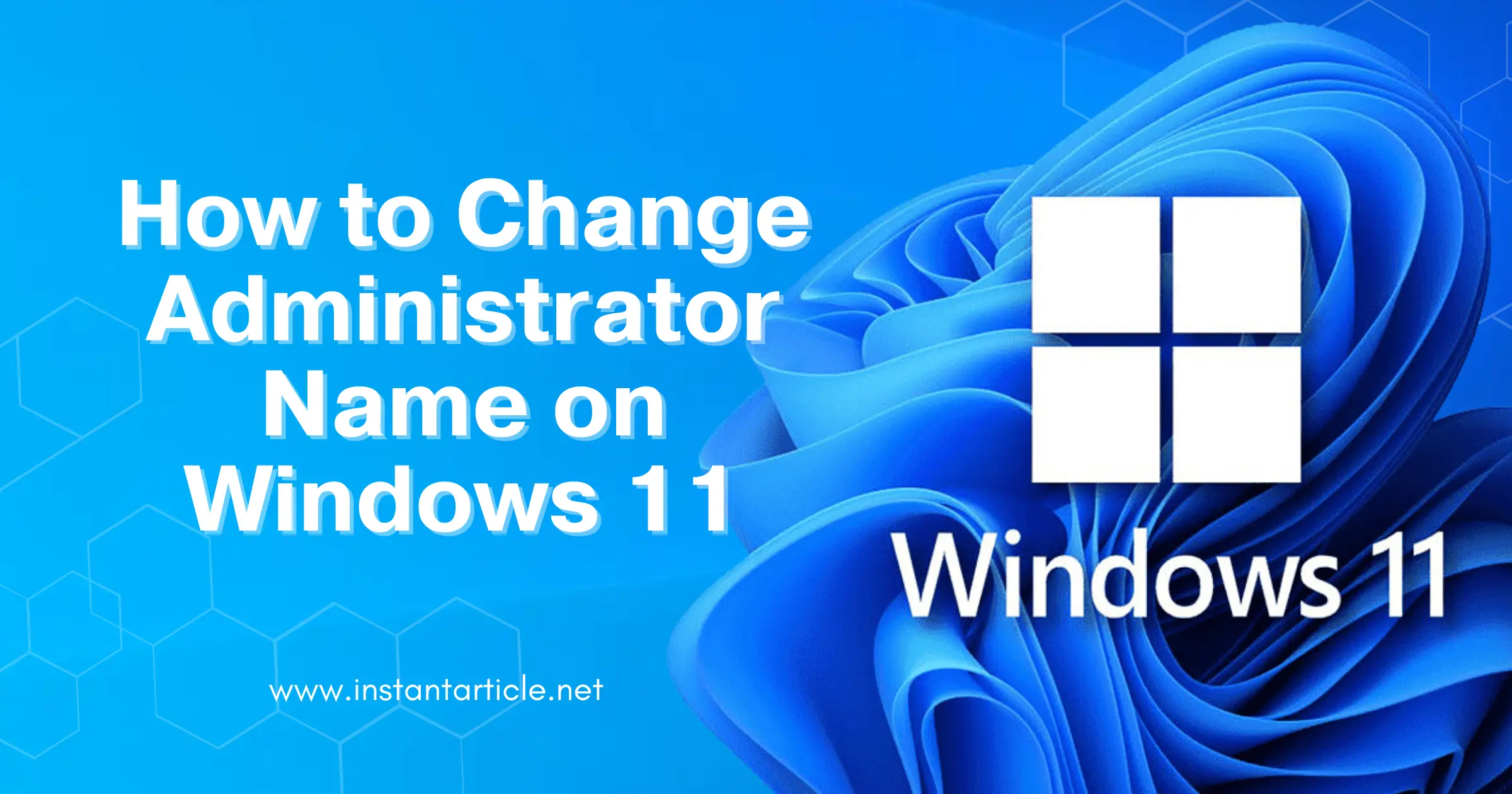Changing the administrator name on your Windows 11 computer is not just a technical adjustment—it can also add a personal touch or improve security. I remember when I first personalized my computer by changing the administrator name; it felt like I was truly making the device my own. In this guide, I’ll walk you through the steps to change the administrator name using different methods, whether you’re tech-savvy or a beginner. Let’s make your Windows 11 experience uniquely yours.
Why Change the Administrator Name?
Changing the administrator name can be beneficial for several reasons:
- Personalization: Reflect your personal style or company branding. For example, if you’re sharing your computer with family or coworkers, using a distinct name can help everyone know which account is yours.
- Privacy: Hide your real name for privacy reasons. This can be especially useful if you often use your laptop in public spaces or share screenshots and recordings.
- Security: Make it harder for unauthorized users to guess login credentials. Cybersecurity experts often recommend not using default names like “Admin” because they can be easily targeted in hacking attempts.
Methods to Change Administrator Name on Windows 11
Method 1: Using the Control Panel
The Control Panel is a traditional tool for managing system settings. Here’s a simple story: I remember guiding my younger cousin through this process when they got their first computer. It’s user-friendly, and the steps are straightforward.
- Open Control Panel:
- Press
Windows + Rto open the Run dialog. - Type
controland pressEnter.
- Press
- Navigate to User Accounts:
- Click on User Accounts.
- Click on User Accounts again in the next window.
- Change Account Name:
- Click on Manage another account.
- Select the administrator account you want to rename.
- Click on Change the account name.
- Enter the new name and click Change Name.
Method 2: Using Settings
The Settings app is the modern way to customize Windows 11. I find this method to be the most convenient, as it integrates seamlessly with the overall look and feel of Windows 11.
- Open Settings:
- Press
Windows + Ito open Settings. - Click on Accounts.
- Press
- Access Your Info:
- Click on Your info on the left panel.
- If your administrator account is linked to a Microsoft account, click Manage my Microsoft account. You’ll be redirected to the Microsoft website to make changes.
- Change Name (Local Account):
- For local accounts, click Sign-in options.
- Click Rename and enter the new name.
- Click Save to apply changes.
Method 3: Using Computer Management
Computer Management provides advanced options for system administrators. I once used this method when setting up a computer lab for a local community center. It’s a powerful tool for those who need more control over their system.
- Open Computer Management:
- Press
Windows + Xand select Computer Management.
- Press
- Navigate to Local Users and Groups:
- Expand Local Users and Groups.
- Click on Users.
- Rename Administrator Account:
- Right-click on the administrator account you wish to rename.
- Select Rename and enter the new name.
- Press Enter to save changes.
Method 4: Using Command Prompt
For those comfortable with command-line tools, the Command Prompt offers a quick way to change the administrator name. Here’s a fun fact: I often use this method when I’m in a hurry and need to make changes quickly.
- Open Command Prompt as Administrator:
- Press
Windows + Sand typecmd. - Right-click on Command Prompt and select Run as administrator.
- Press
- Execute Rename Command:
- Type the following command and press
Enter:
wmic useraccount where name=’CurrentName’ rename ‘NewName’ - Replace
CurrentNamewith the current administrator name andNewNamewith the desired name.
- Type the following command and press
Method 5: Using PowerShell
PowerShell is a powerful scripting language for Windows automation. I recall a project where we automated many administrative tasks using PowerShell scripts, including changing user names. It’s efficient and reliable.
- Open PowerShell as Administrator:
- Press
Windows + Xand select Windows Terminal (Admin).
- Press
- Run Rename Command:
- Enter the following command:
Rename-LocalUser -Name “CurrentName” -NewName “NewName” - Replace
CurrentNamewith the current administrator name andNewNamewith the desired name. - Press
Enterto execute the command.
- Enter the following command:
Tips for Changing Administrator Name
- Backup Important Data: Before making any changes, ensure that you have a backup of important data. This is a good habit to develop, as unexpected issues can occur during system modifications.
- Choose a Unique Name: Avoid using common names like “Admin” or “Administrator” for better security. Unique names can make it harder for cybercriminals to guess your login details.
- Update Login Credentials: After changing the name, update any saved credentials in password managers or applications. This will ensure a smooth transition without access issues.
Conclusion
Changing the administrator name on Windows 11 can enhance personalization and security. Whether you prefer using the Control Panel, Settings, or command-line tools, there are multiple methods to achieve this. Follow the steps outlined in this guide to update your administrator name with ease. Remember, it’s not just about changing a name; it’s about taking control of your digital space.
Action Steps: Try out these methods and see which one you find easiest. Feel free to share your experience in the comments or let us know if you have any tips to add!
Frequently Asked Questions (FAQs)
Yes, you can change the name associated with your Microsoft account by visiting the Microsoft account management page. This is useful if you want a unified name across your devices.
No, changing the administrator name does not affect your files or installed programs. Everything remains intact, so you don’t have to worry about losing data.
A restart is not necessary, but logging out and back in can help apply the changes. This ensures your system recognizes the new name.
Yes, the methods provided in this guide are applicable to all versions of Windows 11. Whether you’re using Windows 11 Home or Pro, these steps will work for you.

